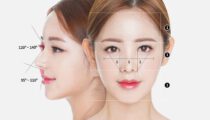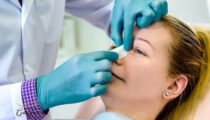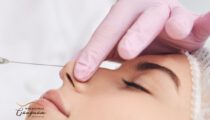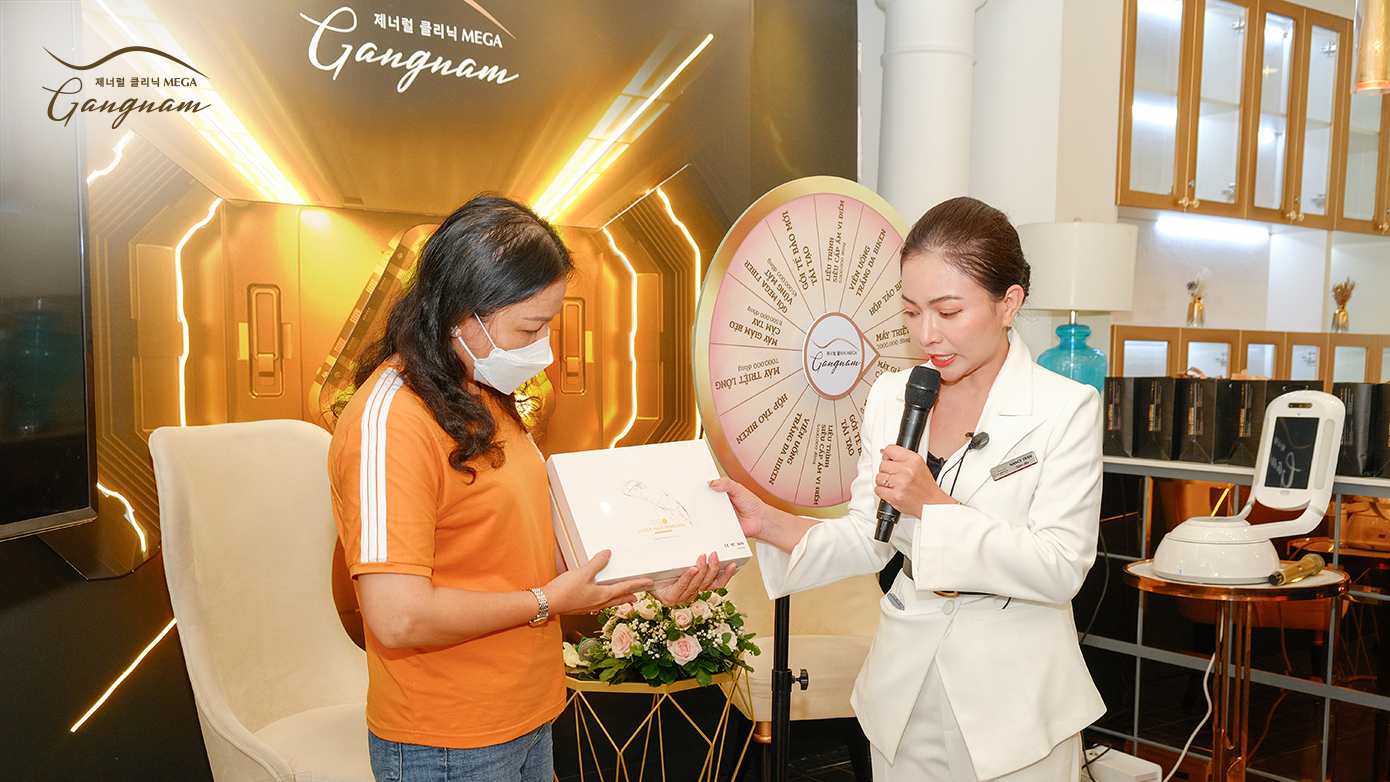You may not know the consequences of rhinoplasty when you get older!
Statistics show that rhinoplasty surgery is the most commonly performed cosmetic procedure in Asian countries. Typically Korea, China, Thailand and even Vietnam. This comes from the desire to improve the shape of the nose and upgrade the appearance of women. However, forms of surgery, including rhinoplasty, are often quite invasive. That’s why people are extremely concerned about the consequences of rhinoplasty when they get older. If you are also wondering about this issue, please refer to the article below!
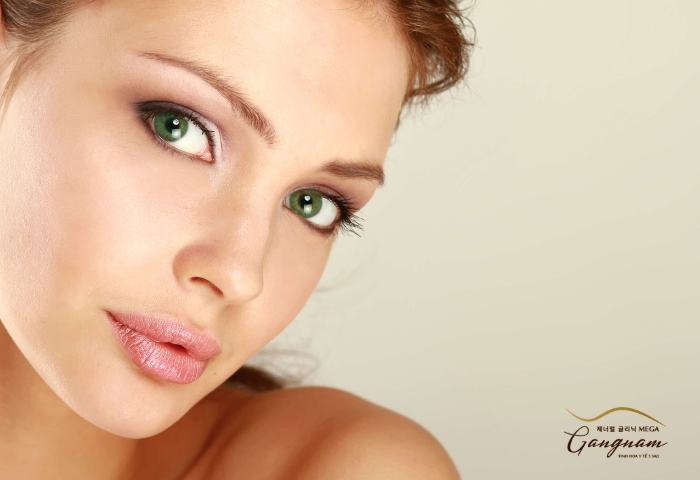
Rhinoplasty surgery and its consequences in old age you may not know!
How is rhinoplasty surgery performed?
Rhinoplasty surgery is a method widely applied for cosmetic purposes or to support the treatment of some medical diseases. This method can effectively improve the shape and function of the nose. The mechanism of rhinoplasty intervention depends on the treatment goals for each case, specifically as follows:
Before surgery begins, your doctor will conduct an initial evaluation to determine your wishes and goals for the surgery. The patient and cosmetic surgeon will discuss possible changes, including nose bridge height, shape, size and respiratory function.
There are two common types of rhinoplasty surgery: open nose surgery and closed nose surgery.
In open surgery, the doctor makes several small cuts in the upper part of the nose to access the internal structures. Meanwhile, with closed surgery, endoscopic instruments will be applied to make internal cuts. Choosing the appropriate rhinoplasty surgery method will be decided based on the patient’s requirements and the actual condition of the nose.
The actual surgery to correct nose structure is extremely complicated. That is also the main reason why women worry about the consequences of rhinoplasty when they get older. The procedure may include removing part of the nasal bone, adjusting the nasal cartilage, or transplanting cartilage from another part of the body (usually the ribs) to help shape the nose. This helps create a new nose that matches the patient’s wishes. If the patient has problems with respiratory function, such as sinusitis or damage to the nasopharynx, the doctor can perform repairs to improve this condition during surgery.
After completing the surgery, the doctor will stitch and close the wounds through the pulse points. Normally, it will take 1-2 months to clearly see the results of rhinoplasty. Due to some side effects and deep injuries, recovery is interrupted. Besides, the rhinoplasty effect may not be as expected or change over time due to the body’s natural development.
Is invasive rhinoplasty surgery deep?
Rhinoplasty surgery is a relatively invasive cosmetic procedure, including intervention in many different components of the nose and surrounding structures. Below is a detailed description of the invasiveness of rhinoplasty:

Rhinoplasty surgeries are highly invasive
- Invades the skin and subcutaneous tissue:
Rhinoplasty surgery usually begins by making a small cut in the skin of the nose, either along the nose or inside the nose (depending on the type of surgery). This cut allows the doctor to access structures inside the nose. When the skin is cut open, the tissues under the skin are also invaded and at risk of damage.
2. Interfering with the bones and cartilage of the nose:
An important part of rhinoplasty surgery is to modify the bone structure and cartilage of the nose. This may include removing part of the nasal bone, adjusting the shape and height of the bone, and modifying the nasal cartilage. Doctors often have to make detailed changes to create a new nose shape that suits the patient’s wishes.
3. Soft tissue and muscle tissue modifications:
In addition to interfering with bone and cartilage, rhinoplasty may also require modification of the soft tissue and muscle tissue around the nose. This may include manipulation of the skin tissue, mucous membranes, and facial muscles to create the desired nasal shape and ensure facial integrity.
4. Repair respiratory function:
If the patient has problems with respiratory function, such as sinusitis or damage to the nasopharynx, rhinoplasty surgery may require intervention to improve this condition. Deep intervention may include widening the airway or adjusting the sinus area.
In general, rhinoplasty surgery has a very high level of invasiveness, not only affecting skin tissue but also making changes in bone structure, cartilage, and respiratory function. Therefore, the rhinoplasty process requires highly specialized knowledge and techniques from the doctor directly treating it.
Signs of damage may occur after rhinoplasty
After rhinoplasty, patients can experience a range of reactions and conditions ranging from temporary reactions to rare complications. Below is a detailed list of possible reactions and conditions following rhinoplasty:
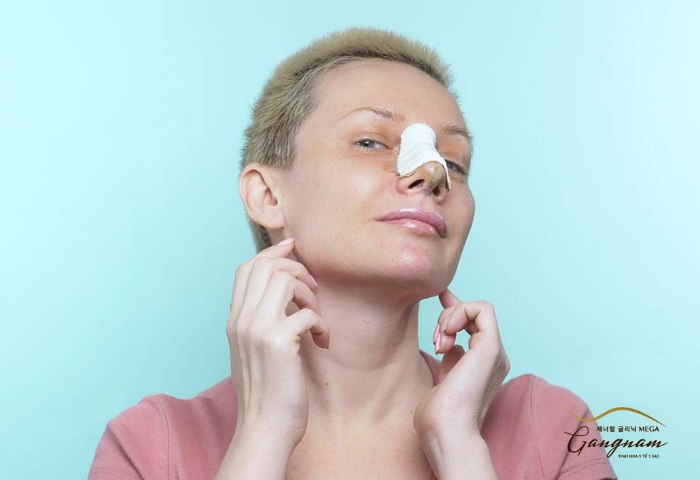
Common problems and complications after rhinoplasty surgery
1. Swelling and pain:
Swelling and pain are common reactions after rhinoplasty surgery. Swelling often appears strongly in the nose area and the surrounding area around the eyes. And it can last for a few days or even the first 1-2 weeks after surgery. The pain after rhinoplasty is also quite noticeable but is usually temporary and can be controlled with painkillers prescribed by your doctor.
2. Eye bruising and swelling around the eyes:
Because the nose area is close to the eyes, the blood vessel system is extremely dense, the skin here is also quite sensitive and thin. So after rhinoplasty, we often encounter eye bruising or even hematoma. This can last from a few days to a few weeks. Your doctor will usually provide instructions on how to reduce this swelling and bruising.
3. External wound and risk of scarring
The wound after surgery is often covered with a cloth bandage to shield the open wound and limit external influences. However, if we do not take care carefully or our body is prone to scarring, we may encounter dark scars or even keloid scars or concave scars after rhinoplasty. In this case, it is necessary to immediately notify the treating doctor for a timely treatment plan.
4. Bleeding and nasal discharge:
Internal bleeding or nasal discharge after surgery is also a common reaction. Patients may notice bleeding from open wounds that have not healed or fluid from inside the nose. This condition is usually quite mild and does not cause excessive pain. However, if the discharge lasts more than 1 week, you need to immediately notify your doctor.
5. Feeling of shortness of breath and chest tightness:
Chest tightness or a feeling of tightness may occur due to the surgical process causing compression of the organs inside the nose. Initially after surgery, we may feel that breathing through the nose becomes difficult, sometimes accompanied by pain and tightness in the chest area. Doctors will often instruct patients on ways to relieve pain and restore respiratory function.
6. Rare complications:
Although rare, rhinoplasty surgery can cause serious complications such as infection, an allergic reaction to the anesthetic, or unusual swelling. Patients need to monitor unusual symptoms and regularly report them to the treating doctor directly. Be careful with swelling, pain, or excessive bleeding or pus discharge.
The extent and duration of recovery after rhinoplasty can vary from person to person and depends on the specific surgical procedure. Following your doctor’s instructions and post-operative care is essential to ensure the best final results. As well as maximum prevention of unwanted complications.
What are the consequences of rhinoplasty in old age?
Rhinoplasty surgery is a complex cosmetic process that has a fairly deep level of intervention in the shape and structure of the nose. Although this method is considered highly effective and brings long-lasting results. However, even if we have rhinoplasty at a young age, we are still likely to face some health risks when we get older. So what are the consequences of rhinoplasty in old age? Explore below!v
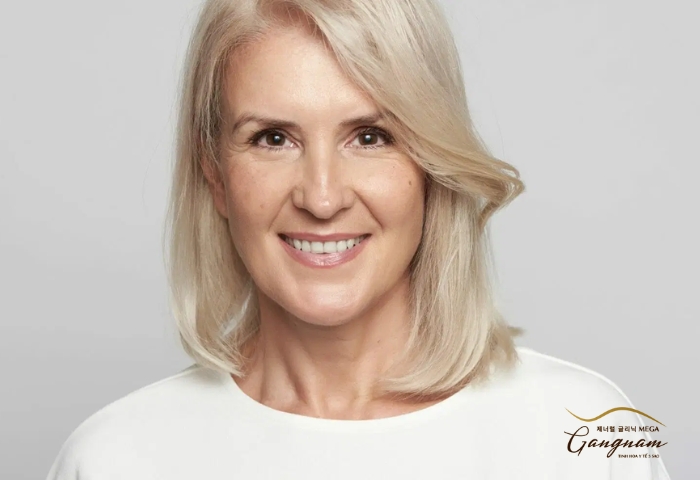
As we get older, we may encounter some complications from previous rhinoplasty surgery
One of the important points to understand is that your facial structure, including your nose, can change over time, due to the body’s natural aging. This means that the results of rhinoplasty may not be fully maintained until you are older. Detailed parts and the shape of the nose may be misaligned or uneven due to subsidence and changes in muscle and fatty tissue.
In addition, increasing age also makes the skin thinner and weaker and loses elasticity. Leading to the exposure of smaller details of the nose structure such as the cartilage becoming obvious or the nose wings sagging. Especially in case you perform highly invasive rhinoplasty surgeries.
In addition, experts also give some warnings about the risk of complications after rhinoplasty when we get older. Problems such as swelling and pain are likely to appear during season changes, changes in living environment, and cold weather. Besides, as we get older, respiratory problems or breathing through the nose also become more difficult. In case you have underlying medical conditions such as cardiovascular disease, diabetes or other general health problems. Treatment and recovery are also limited and recovery time is longer.
Finally, if we have had rhinoplasty intervention surgery, we need to monitor and maintain according to the doctor’s requirements. This is to ensure that results are maintained later as well as limit possible complications.
Above we have provided information to answer readers about the consequences of rhinoplasty in old age. In general, the problem of complications as we age is not common, mainly depending on our constitution and underlying pathology. Regular examination and check-ups are needed to ensure long-term beauty effects are maintained. If you are concerned about side effects, you can consider highly effective non-invasive cosmetic procedures such as thread rhinoplasty or collagen injections. For more specific advice, please contact Mega Gangnam directly via Hotline: 093.770.6666!
Refer to these articles to better understand possible risks and choose the safest rhinoplasty method:
Summary of the latest rhinoplasty techniques and safety assessment [Updated 2023]
Is structural rhinoplasty safe? Common problems and suggestions from cosmetic doctors
Choosing Non-Surgical Rhinoplasty: Which method is the safest and most effective?





